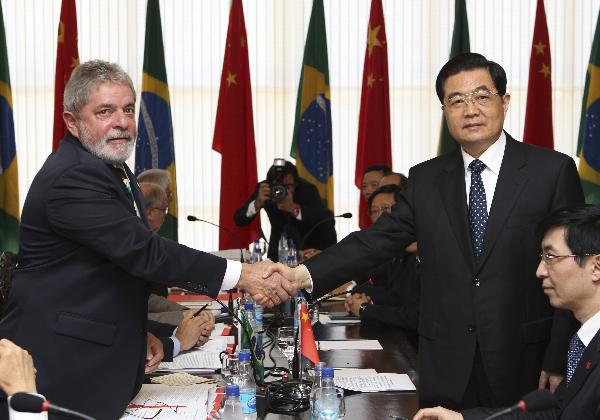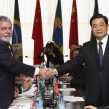
Brazil and Argentina: China’s Growing Foothold in Latin America
Publication: China Brief Volume: 10 Issue: 11
By:

On May 21, Norwegian oil company Statoil announced that it agreed to sell 40 percent stake ($3 billion) of the Peregrino field located in the Campos basin offshore of Brazil to Chinese state-owned Sinochem Group. The Peregrino announcement closely follows the disclosure in March that another major Chinese state-owned oil company, China National Offshore Oil Company’s (CNOOC), was acquiring 50 percent stake ($3.1 billion) in a joint venture with Argentina’s Bridas Energy Holdings Limited. While the two transactions are still subject to their respective governments’ approval, these agreements highlight the renewed focus of Chinese activities on Latin America, markedly raising China’s stakes and profile in the region. The apparent surge of Chinese interests in the region demonstrated by the raft of recent deals also laid bare Beijing’s geopolitical strategy to assure a diversified energy supply and evolving strategic partnership with Latin America (Global Times [China], May 14).
In Brazil, according to the party-owned Global Times, China Development Bank (CDB), China Petroleum and Chemical Corporation (Sinopec) and Brazilian state-run energy giant Petroleo Brasileiro SA (Petrobras) signed an "oil-for-loan" agreement that stipulates that Petrobas will be committed to a 10-year oil supply (of roughly 200,000 barrels of oil per year) to Sinopec in exchange for $10 billion worth of loans from the CDB within the next ten years (Global Times, May 26; China Times [Taiwan], May 26).
In Argentina, CNOOC President Yang Hua commented, "Bridas, with a world-class oil and gas asset portfolio, is a very good beachhead for us [CNOOC] to enter Latin America. Through this transaction, we’ll establish a fair presence in this region, which will further enable the Company’s production and reserve growth in the future" (Oil Voice, March 14). Bridas also has exploration and production operations in Bolivia and Chile, and according to a CNOOC statement filed with Hong Kong’s stock exchange, it owns 40 percent of Pan American Energy LLC, an affiliate of BP Plc. (Business Week, March 14).
In Venezuela, China recently agreed to extend $20 billion of loans to Caracas, with the payment terms being $10 billion and 70 billion yuan ($10.25 billion). China and Venezuela will reportedly form a joint venture to operate the Junin-4 Block located in the Orinoco heavy oil belt, which is expected to yield 2.9 billion barrels of extra-heavy crude over the 25-year contract term (Global Times, April 20). According to Wang Peng, a Latin America researcher at the prestigious Chinese Academy of Social Sciences, the significance of the loan is that, "The 70 billion yuan fund will be a trial to internationalize the yuan. Given the large oil reserves and oil potential, the settlement of the deal in yuan will raise the Chinese currency’s position in oil trade" (Global Times, April 20).
Chinese leaders’ sense of insecurity has grown as the country’s dependency on foreign energy deepens. In order to reduce its vulnerability to high oil prices, China has intensified its courting of Latin America as one of its three major regional energy suppliers (e.g. Russia/Central Asia and the Middle East/Africa). While China’s energy imports from Latin America lag in comparison to such imports from other regions, China’s substantial commitments in Argentina, Brazil and other areas are strong indicators of the push to come.
As these recent cases also demonstrate, China’s presence in Latin America is not confined to only securing access to markets and sources of primary products. It is also strategic. Given Brazil’s and Argentina’s relatively sophisticated level of development in several high-technology sectors, it is not surprising to see Brasilia and Buenos Aries emerge as hubs of China’s push into the region. Progress in trade, investment and political and military cooperation are usually tied to cooperation in the energy sphere. Indeed, both Brazil and Argentina possess a vibrant nuclear industry, a robust aerospace industry and a telecommunication infrastructure, among others.
Against the backdrop of the global financial crisis, Chinese activities in Latin America have become notably more pronounced. The impact that the crisis has had on Western economies cannot be understated, and the depth of China’s strategic partnership with countries in the region is becoming clear as China becomes more confident and assertive in conducting its foreign policy. While it remains unknown at what cost to U.S. interests China’s strategic partnerships with Latin America will have in the long-term, it behooves Washington to engage Latin America and maintain friendships throughout the region as the power gravity slowly shifts east.





